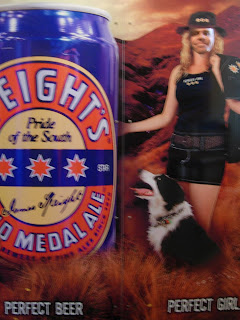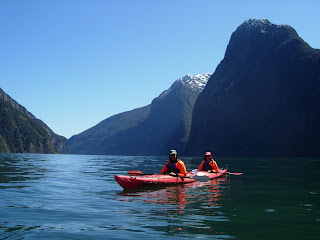
After hearing a couple of stories from locals and tour guides I did a bit of reading and feel that I should share the following with you.
New Zealand was part of Gondwanaland many million years ago. It broke away from the main land mass before mammals and became the perfect environment for it's native species. The bird life was spectacular, with many even losing the ability to fly, like the Takahe (pictured above), because of the complete lack of predation. This would not last forever.
Early european settlers couldn't bring themselves to the comply with the eating habits of the Maori's and had become bored with eating birds. They introduced rabbits and were very happy with themselves. These flourished but caused massive erosion of farmland. In all their wisdom the New Zealand government decided to counter the exploding rabbit population with weasels, stoats and ferrets. These are unbelievably reproductive creatures. A stoat female normally has 10 offspring and by the time these leave the nest all of the females are pregnant. These animals did a fantastic job with the rabbits but then turned their attentions to the bird life. They have almost completely wiped out the native birds of New Zealand.
After the end of the gold rush, New Zealand decided to introduce Possums with the view of using their fur. Once again a highly stupid move that has resulted in huge amounts of native vegetation being consumed and a further impact on the bird life.
Walking through the forests is magical but the silence is ghostly.































 A quote from Richard Henry* that you can truly appreciate if you've spent more than a month in the country. With 4 seasons in 1 hour and winds that make driving our camper more exciting than many of the countries extreme sports, it really can be rough. One of the largest radio stations even spent an hour trying to convince callers not to leave the country because of the bad weather. At the end of the hour the DJ had booked his flight.
A quote from Richard Henry* that you can truly appreciate if you've spent more than a month in the country. With 4 seasons in 1 hour and winds that make driving our camper more exciting than many of the countries extreme sports, it really can be rough. One of the largest radio stations even spent an hour trying to convince callers not to leave the country because of the bad weather. At the end of the hour the DJ had booked his flight. After hearing a couple of stories from locals and tour guides I did a bit of reading and feel that I should share the following with you.
After hearing a couple of stories from locals and tour guides I did a bit of reading and feel that I should share the following with you.





